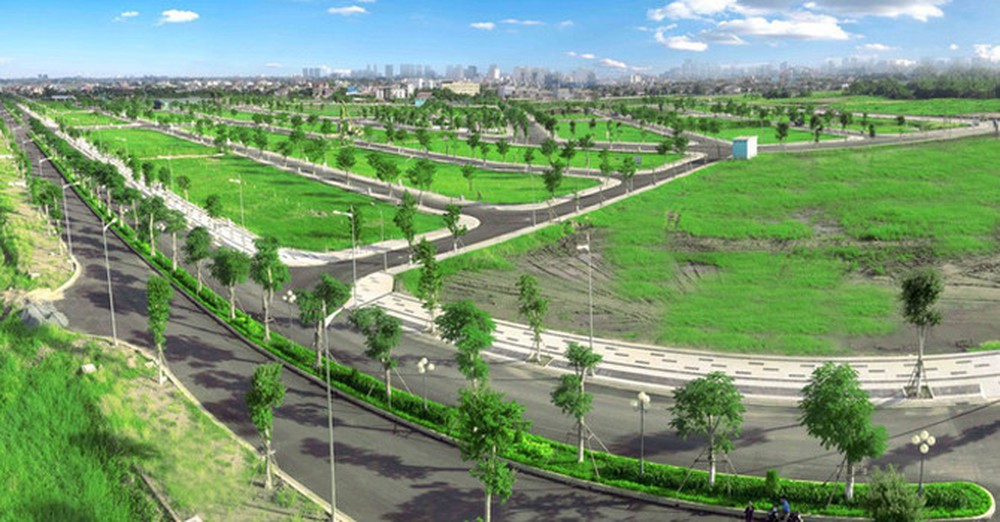The land fever matrix
The property market in Q. I saw a price spike and an excitement for the land segment in four to-be-upgraded districts in Hanoi as well as some provinces like Van Don (Quang Ninh), Da Nang, Nhon Trach (Dong Nai), etc.
Per investors’ assessments, the average price increase in hot areas ranged between 20 – 50%. For locations with prime land fund, at the peak of the fever, the markup could go up to 100 – 200%.
In Hanoi’s suburbs, particularly Gia Lam, land prices surrounding the Vinhomes project increased sharply. Land fund in Trau Quy (Gia Lam) became scarce as investors have hunted and hoarded since early on. Prices in Dong Du also moved within VND 20 – 30 million/m2 and in Dang Xa within VND 18 – 35 million/m2, up 20 – 50% compared to February.
Meanwhile, the land price along Thang Long Boulevard also went up by 30 – 50%, ranging from VND 20 to 45 million/m2, benefited from the Vinhomes Sportia and the rumor that Hoai Duc will soon become a district.

(Illustrative image)
One of the hotspots of the Northern market that could not be ignored was Van Don (Quang Ninh) as it observed several quick transactions, pushing the markup to hundreds of millions of dong. For some projects like Phuong Dong, prices were set around VND 45 million/m2. Per many brokers, it would be challenging to grab top-tier lots, if they did not shell out early.
In Da Nang, the land fever has returned after a long freezing period with an average rise between 20 – 30%, some peculiarly increased 300%. The fever also spread to Quang Nam and Thua Thien-Hue.
In the South, land prices in nearby provinces of Ho Chi Minh City also skyrocketed, especially Nhon Trach (Dong Nai). The story of carrying a sack of cash to buy lands or earning hundreds of millions in markup has become quite familiar in the land fever bewilderment.
Is land still appealing in Quarter II?
In evaluation of the land fever in Q. I, experts revealed that the volume of transactions only accounted for a negligible proportion of total sales. Real buyers was still exploring and considering. Appraising that land was the leading investment route in Q. I, Dr. Vo Tri Thanh supposed in Q. II, land will still be an exciting channel but investors should be cautious with rumors and wait for clear planning.
In assessment for the potential of this segment, Prof. Dang Hung Vo stressed that land will still be an attractive investment channel. According to Prof. Dang, land is as promising and enticing as apartments because it fits the Asian traditional habit of owning land.
Another reason Prof. Dang Hung Vo gave was that land will keep being monitored by investors because of its future abundant supply. “In 2004, the Government did not permit splitting and selling land lots in any project. In 2011, splitting was allowed for tier-3 projects or below. Now it depends on the provincial People’s Committee. This is the reason causing land projects in many provinces to rise strongly”.
In another view, Mr. Dang Van Quang, Director of JLL Hanoi claimed, “Most Asian are interested in land. Meanwhile, apartments are mainly for those who are not yet able to purchase land, which is their desire”.
Mr. Dang emphasized, “In the past, in Vietnam, the land supply to market was limited. Projects selling lands used to be distant, in suburban, where most people ride motorbikes. Recently, the infrastructure in Vietnam has been improving, the urbanization has been expanding, plus the affordability for transportation has been getting better, so people will pay more attention to land”.
In addition, many opinions agreed that when the estate market performs well, the land segment will follow. On the overview of the property market in Q. II, Dr. Vo Tri Thanh optimistically commented that a quiet first quarter is cyclical, and the second quarter will normally have a better performance.

















